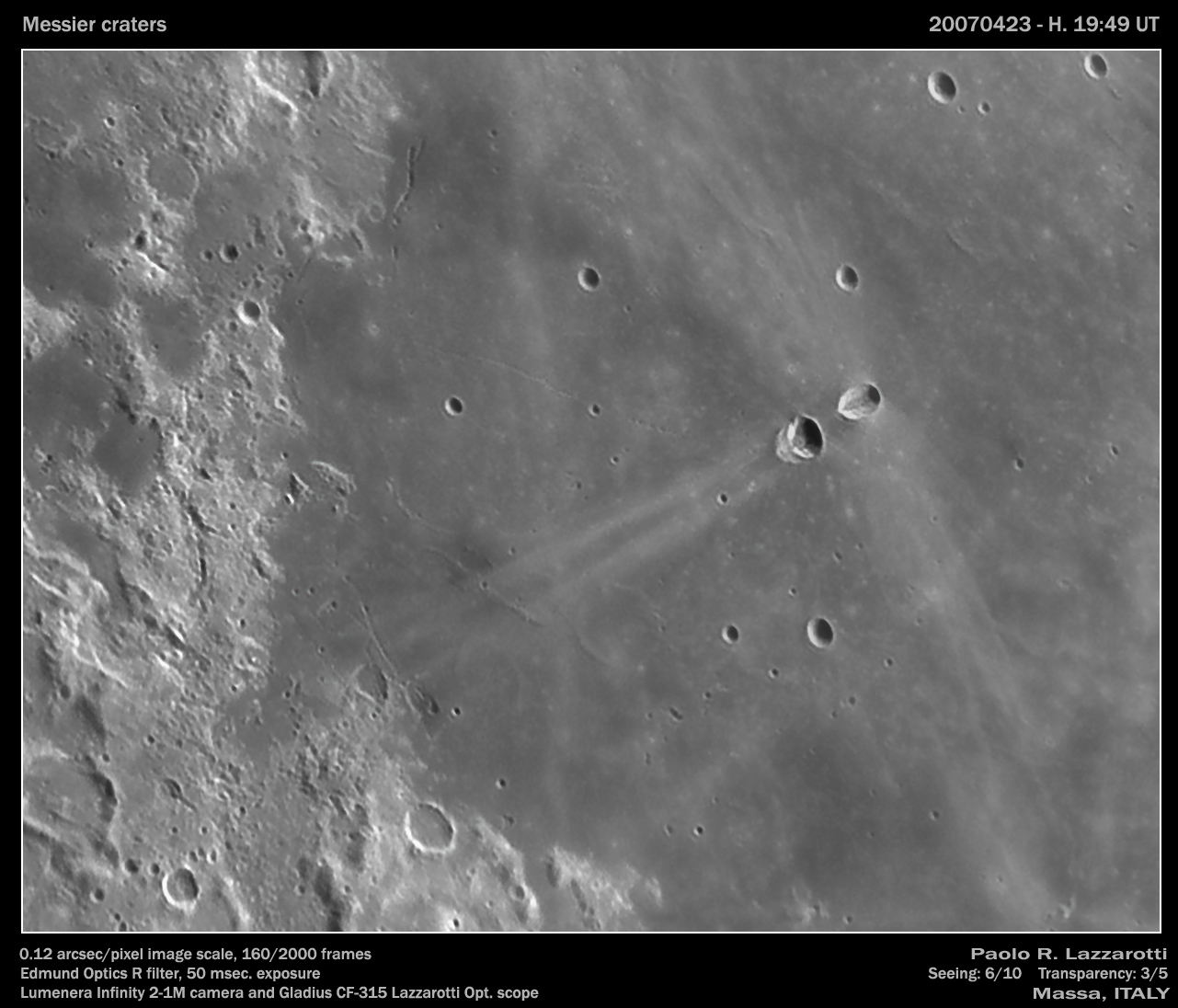
image by Paolo R. Lazzarotti, Massa, Italy.
The Messier twins (fraternal, not identical) have fascinated and bewildered observers for more than 100 years. Paolo’s spacecraft-like image reveals the linear ridge on the floor of Messier, and the complex structure of Messier A. But I find other things equally fascinating here. The Secchi Rille at upper left clearly is made of closely spaced pits, as are the Messier Rille that angles toward Messier A, and the unnamed rille that the twin rays cross at the western edge of Mare Fecunditatis. Download the image and use a strong dose of unsharp mask filtering to be convinced. Another type of feature that shows up in multiple locations is local dark spots on the mare. The first is centered on the north end of the Secchi Rille and another is at the south end of unnamed rille. The third dark patch is around small hills near where the north Messier ray crosses a mare ridge. The last small spot surrounds another tiny hill east of Messier. The association of the first two with the pit chain rilles is suggestive that they may be pyroclastic (volcanic ash) deposits but they are not included in the USGS catalog. Isn’t it amazing that with excellent resolution the Messier craters have to share star billing with little pits and spots!
Technical Details:
23 April 2007, 19:49 UT. Gladius CF-315 Lazzarotti telescope (f/25), Lumenera Infinity 2-1M camera, Edmund Optics R filter, 160 frames stack out of 2000.
Related Links:
Rükl plate 48
Paolo’s website
The amazing telescope that creates these images
You can support LPOD when you buy ANY book from Amazon thru LPOD
COMMENTS?
Click on this icon File:PostIcon.jpg at the upper right to post a comment.



